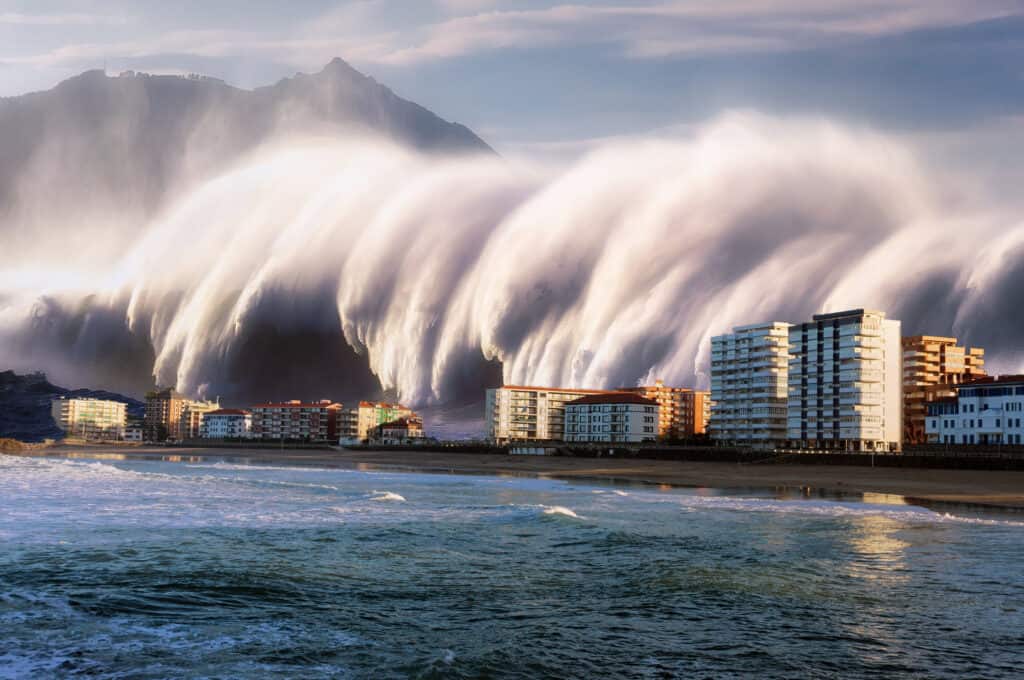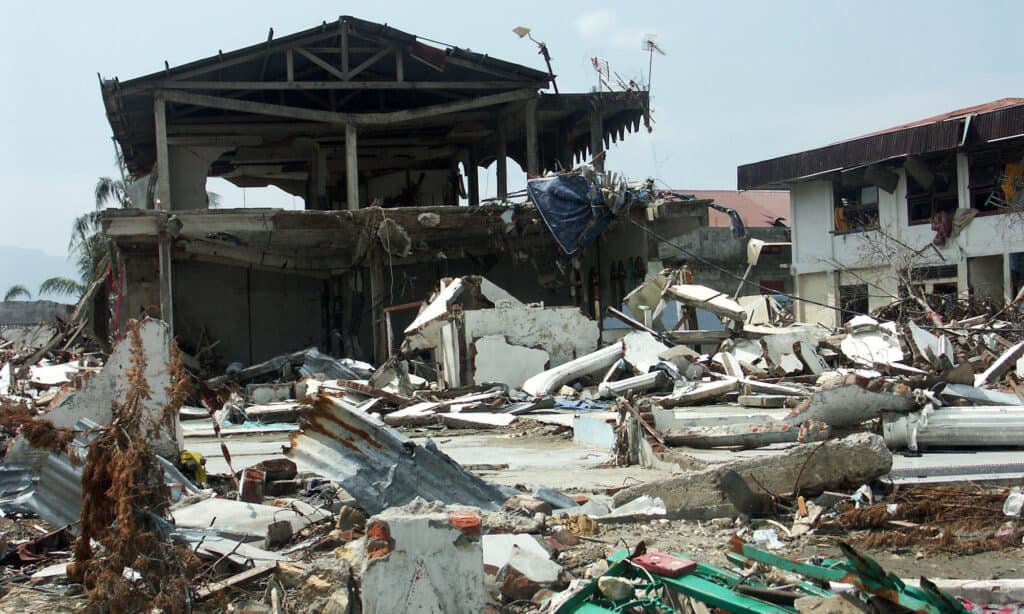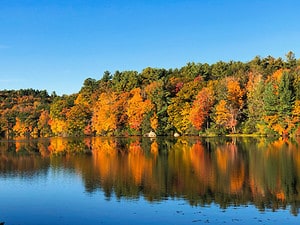Tsunamis are some of the most devastating natural disasters that humans really experience. They make the list of the most dangerous events, alongside ice storms, hurricanes, tornados, and only a few others. When there is a tsunami, it’s always bad news. As a general rule, most of humanity congregates along the coasts, which can be a problem when tsunamis occur. In fact, almost 3/4ths of all humans live within 50 km of the sea, meaning that tsunamis could potentially impact huge centers of people.
California is one of the most densely populated states in the US, and a huge portion of that population lives near the coast. Today, we are going to learn about tsunamis in California and the facts, risks, and preparation that everyone in the state should probably be aware of. Let’s get started.
Do Tsunamis Happen in California?

Tsunamis can hit California, but they aren’t super common.
©Mimadeo/Shutterstock.com
Yes, tsunamis can happen in California. Although tsunamis aren’t incredibly common across the state, California’s long coastline makes it vulnerable to them, particularly because of the state’s location along the Pacific Rim.
The Pacific Rim is a ring of land around the Pacific Ocean, and since there is so much geological activity associated with this “ring,” tsunamis are a natural result. Many of the other natural phenomena that we associate with the west coast and Pacific region (earthquakes and volcanic activity) can be directly attributed to the tectonic activity across the Pacific as well.
California has been hit by several tsunamis before. The state is also at risk of tsunamis generated by earthquakes along the Cascadia Subduction Zone, which runs along the Pacific Northwest coast. Generally, tsunamis may not be as frequent in California as in other coastal regions along the Pacific, but they do happen, and they can be extremely dangerous.
What Causes Tsunamis?

Tsunamis are usually caused by underwater earthquakes, but can also be caused by meteors, volcanos, and more.
©A.S. Zain/Shutterstock.com
Tsunamis are caused by large-scale underwater disturbances that generate ocean waves with tremendous energy. The most common cause of tsunamis is earthquakes that occur beneath the ocean floor. When an earthquake occurs, the sudden movement of the Earth’s tectonic plates can cause the water above it to be displaced, creating a tsunami.
Volcanic eruptions, underwater landslides, and meteor impacts can also trigger tsunamis. In some cases, tsunamis can travel across the open ocean for thousands of miles before reaching the shore and causing damage. In fact, the meteor that killed the dinosaurs likely triggered one of the largest tsunamis in history when it slammed into the ocean just east of modern-day Mexico.
Also, tsunamis can occur anywhere there is a large body of water, including oceans, seas, and large lakes. However, the circumstances are usually pretty localized to cause a tsunami in a body of water that isn’t an ocean.
The Worst Tsunami to Ever Hit California

California was hit by a 4-foot tsunami in 1960 from an earthquake off the coast of Chile.
©iStock.com/o:MAXIM ZHURAVLEV
The worst tsunami to ever hit California was probably the tsunami of 1960. This tsunami was caused by an 8.6 magnitude earthquake off the coast of Chile in South America. After the earthquake, energy traveled through the water all the way north, eventually hitting southern California, specifically Santa Monica and Port Hueneme, damaging the Los Angeles and Long Beach harbors. When the wave hit, it was around 4 feet tall. Although it doesn’t sound incredibly dangerous, 4 feet of fast-moving water sweeping through a city can be devastating.
Another more localized tsunami happened back in 1812. The wave hit Santa Barbara and Ventura County and was reportedly 6-10 feet high. The damage was much more localized and mostly damaged buildings, but it definitely wasn’t something you wanted to get caught up in.
How to Prepare for a Tsunami in California
To prepare for a potential tsunami in California, it is important to familiarize yourself with the evacuation zones in your area and to plan for what you and your family would do in the event of a warning. It is also important to register your cell phone with the localized systems to receive emergency information via phone calls or texts if a tsunami is detected. If one is detected, the governmental authorities in your area will send a warning, usually via text.
If a tsunami warning is issued, evacuate the coast immediately and head to higher ground. Do not return until the all-clear is given by local authorities since there could be secondary waves that aren’t visible yet. Staying informed and prepared is key to staying safe in the event of a tsunami in California.
Up Next:
- The 5 Worst Tsunamis of All Time and the Devastation They Caused
- Why Are Volcanic Tsunamis So Dangerous?
- What Causes a Tsunami, How Are They Formed?
The photo featured at the top of this post is © Michael Vi/Shutterstock.com
Thank you for reading! Have some feedback for us? Contact the AZ Animals editorial team.






